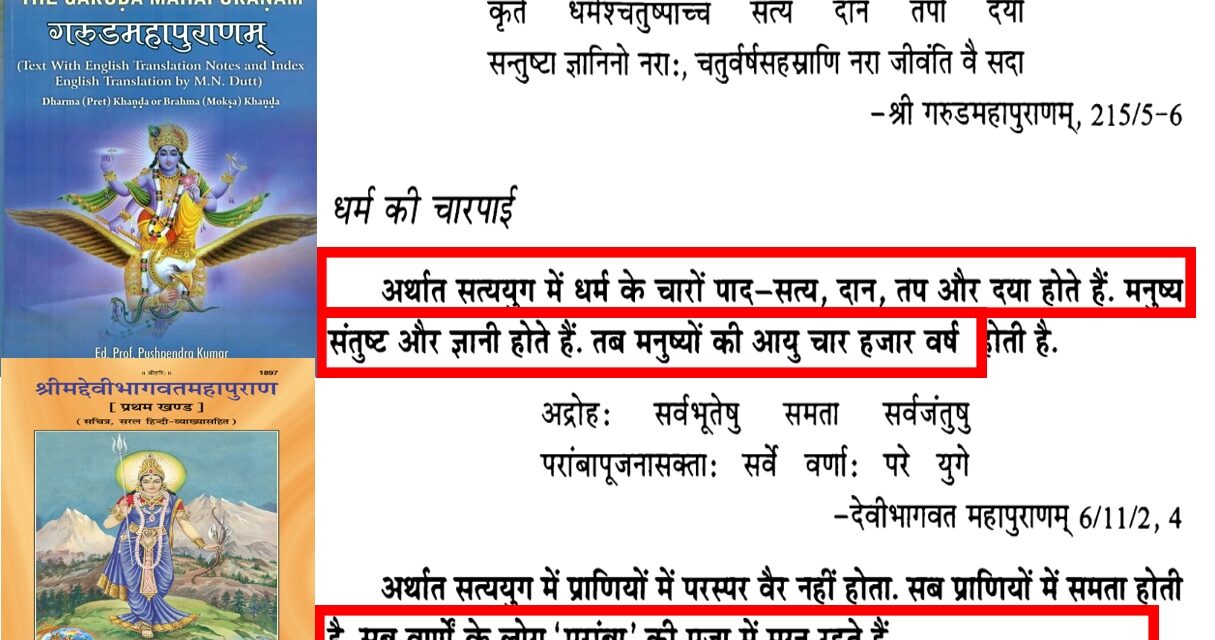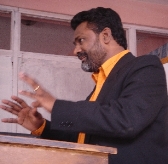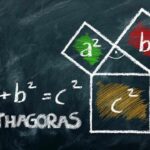By – The Don
Let’s begin by exploring the concept of a Yuga cycle. In Hindu Vedic cosmology, a Yuga cycle represents a recurring cycle of time. The traditional description of this concept can be found in ancient scriptures like the Vishnu Smriti, Manu Smriti, Mahabharata, various Puranas, Surya Siddhanta, and others. These descriptions, while incredibly detailed, are often written in somewhat obscure language. So, instead of quoting them directly, I’ll provide an explanation in simpler terms.
According to Vedic scriptures, the universe operates on a cyclical notion of time, as opposed to a linear one. In our particular region of the universe (as it is not uniform throughout), there are four major ages known as Yugas that repeat in a specific sequence. These Yugas are named Krita Yuga (also known as Satya Yuga), Treta Yuga, Dwapara Yuga, and Kali Yuga. The entire cycle of these four Yugas is referred to as a Chatur Yuga, which simply means “four Yugas,” or as a Maha Yuga, meaning “great Yuga.”
The duration of a complete Chatur Yuga cycle is precisely 4,320,000 years. However, this time is not evenly distributed among the four Yugas. Krita Yuga spans 1,728,000 years, Treta Yuga lasts 1,296,000 years, Dwapara Yuga endures for 864,000 years, and Kali Yuga lasts for 432,000 years. This results in a ratio of 4:3:2:1. Importantly, life is considered to be at its best and most harmonious during Krita Yuga and gradually deteriorates in each successive Yuga until it is rejuvenated at the start of the next cycle. The moral and physical state of humanity declines in each Yuga, with Dharma, the principle of righteousness in individual, social, and spiritual contexts, diminishing in each era. Additionally, humans’ ability to perceive and interact with realities beyond the material world diminishes with each Yuga, reaching its zenith in Krita Yuga.
The transition from one Yuga to another is not abrupt; instead, it occurs gradually. These transitional periods are known as Yuga Sandhyas or “Twilights.” During these phases, the characteristics of the fading Yuga persist as the qualities of the approaching Yuga begin to manifest. Each Yuga cycle begins with a Yuga Sandhya, followed by the Yuga itself, then the Yuga Sandhyansha, and finally, the next Yuga commences with its Yuga Sandhya. The actual durations of these phases are as follows:
– Krita Yuga Sandhya – 144,000 years.
– Krita Yuga proper – 1,440,000 years.
– Krita Yuga Sandhyansha – 144,000 years.
– Total: 1,728,000 Human Years.
– Treta Yuga Sandhya – 108,000 years.
– Treta Yuga proper – 1,080,000 years.
– Treta Yuga Sandhyansha – 108,000 years.
– Total: 1,296,000 Human Years.
– Dwapara Yuga Sandhya – 72,000 years.
– Dwapara Yuga proper – 720,000 years.
– Dwapara Yuga Sandhyansha – 72,000 years.
– Total: 864,000 Human Years.
– Kali Yuga Sandhya (We are currently in this phase) – 36,000 years.
– Kali Yuga proper – 360,000 years.
– Kali Yuga Sandhyansha – 36,000 years.
– Total: 432,000 Human Years.
The current Kali Yuga is believed to have begun in 3102 B.C.E., and we are presently 5,125 years into the Kali Yuga Sandhya.
Here is a timeline of the Yugas and some well-known major texts associated with each Yuga according to Brahmanical records:
Satya Yug:
– Total Years: 1,728,000 Human Years.
– Timeline: 3891102 BC To 2163102 BC.
– Books: Vedas, Manu Smriti.
Treta Yug:
– Total Years: 1,296,000 Human Years.
– Timeline: 2163102 BC To 867102 BC.
– Books: Ramayana, Gautama Smriti.
Dwapara Yug:
– Total Years: 864,000 Human Years.
– Timeline: 867102 BC To 3102 BC.
– Books: Mahabharata, Shank and Likhita Smriti.
Kali Yuga:
– Total Years: 432,000 Human Years.
– Timeline: 3102 BC To 428898 AD.
– Books: Parashar Smriti and Puranas.
It’s worth noting that Manusmriti is associated with Satya Yuga and not Kali Yuga, as indicated by Parashar Smriti.

So, this represents the fundamental, simplified understanding of the Yuga concept in Hinduism, deeply ingrained in the cultural consciousness of every Hindu. When unfortunate events occur, it is common to attribute them to the influence of Kali Yuga and hold Kali Yuga responsible. However, it’s important to note that the concept of Yugas as we perceive them today is a creation of the Puranic texts.
In Vedic literature, there is no direct connection between the concept of Ages and the four Yugas as we know them. Even Manu, in Section XLI of Manusmriti, describes Yugas as a Time-Cycle of the Gods. Manusmriti 1:71 explains that these four time-cycles make up the “time-cycle of the gods,” with each consisting of twelve thousand such periods.
The names Krita, Treta, Dwapara, and Kali are derived from Vedic literature and are associated with the ancient gambling game of dice. They appear repeatedly in Vedic texts in the context of this gambling activity. For instance, Rigveda 10.34 mentions a gambler lamenting the loss of his possessions.
There are connections between the names of the Yugas and the game of dice found in the Taittrīya Samhitā 4.3.3.1-2, where an invocation to the five cardinal directions (north, south, east, west, and zenith) is made during the construction of an altar. Dice games were traditionally played near such altars, as evidenced in references to the Baudhyānaśrautasūtra. Each direction is associated with various elements, including a season, a deity, a sage, and a specific age in the life of a calf.
In essence, the Yuga concept in Hinduism, as understood today, is a product of later Puranic texts and is intimately linked to the ancient practice of dice gambling, which had ritual significance in Vedic rituals near altars. This connection reflects the complex and multifaceted nature of Hindu cosmology and its evolution over time.
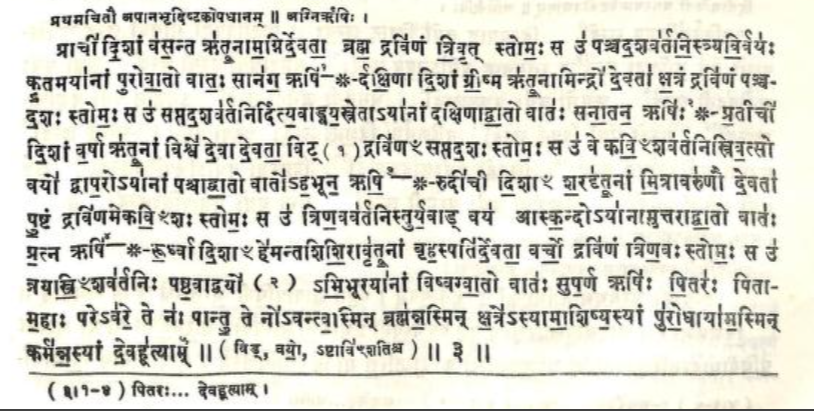
We also find the name of the Yugas in the Vajasaneyi Saṃhitā 30.18:

Furthermore, another reference is also found in Taittrīya Brāhmaṇa 3.4.16.

The meaning of the word “Kṛta” as “success” can be derived from the Baudhyānaśrautasūtra २.८-९, a text that provides meticulous instructions for setting up sacred ritual fires. In this text, it is stated that “दक्षिणतोऽधिदेवनं करोति,” which means “towards the south, he prepares the gambling place.” Then, it mentions the pouring of forty-nine dice with the line “तदेकान्नपञ्चाशतोऽक्षान्निवपत्यथ.” In verse 9 of the same text, it states that four individuals sit around the dice, and when the game is over, they say, “The Kṛta — game is over,” and depart, as expressed in “कृतंकृतमित्येव व्यपगच्छन्ति.” They also say, “The cow has been won,” and get up, as indicated in “द्यूता गौरित्युक्त्वोत्तिष्ठन्त्यथैभ्यो.”
The use of the word “Kali” can be found in the Atharva Veda 7.109.1, where a prayer for success in gambling is presented. In this hymn, Kali is invoked and propitiated with clarified butter as a means of assisting the gambler.
Therefore, the association of the four Yugas in Vedic literature has primarily been limited to representing the outcomes of dice throws in gambling rituals.
Now, let’s examine the Yugas as described in the Mahabharata and Manusmriti. In Mahabharata, specifically in the Udyoga Parva (Bhagwat Yana Parva) Chapter 132, it is mentioned that the proper application of a penal code by a ruler leads to the adherence of the four orders to their respective duties and results in a period known as the Krita Yuga. It is emphasized that the king is the cause of the era, and it is the king who determines whether the Krita, Treta, Dwapara, or Kali age prevails. A king who brings about the Krita age enjoys heavenly rewards exceedingly, while the rewards decrease with each subsequent age.
In Manusmriti 9:301-302, it is stated that the behavior of a king or government resembles the Satya, Treta, Dwapara, and Kali ages. When the king is inactive or “asleep,” it represents the Kali Yuga. When the king is “awake,” it symbolizes the Dwapara cycle. When the king is “ready to act,” it corresponds to the Tretā Yuga, and when the king is “actually acting,” it represents the Kṛta Yuga.
Hence, in both the Mahabharata and Manusmriti, the association of the four Yugas is primarily related to the periods of a king’s rule or the behavior of the ruler.
Historically, we can observe the usage of the Yuga concept in one of the earliest inscriptions, such as the Pikira grant of Pallava Simhavarman from the mid-5th century AD. This inscription mentions the effects of Kali Yuga and how Pallava Simhavarman was committed to restoring dharma, which had declined due to the influence of Kali Yuga.

Prior to the 5th century AD, there is no historical evidence of the use of the Yuga concept in the context of Indian history or on a global scale, except in Brahmanical Puranic literature. This concept appears to be unique to the Indian subcontinent during that period. The reason for this exclusivity is described in various ancient texts, such as the Mahabharata (Bhishma Parva – Jamvu-khanda Nirmana Parva) Chapter 10:3, Matsya Purana 142/17, and The Brahmanda Purana 1/29/23.
According to these texts, the four Yugas, namely Krita, Treta, Dwapara, and Kali, are said to occur exclusively in Bharata’s Varsha, which corresponds to part of the Indian subcontinent. This is why these Yugas are not associated with other regions, countries, or continents in the world.
The explanation for this phenomenon is deeply rooted in the cosmological and mythological beliefs of ancient Indian traditions. It is considered a unique aspect of the Indian subcontinent’s spiritual and cultural heritage. The Yuga concept, as described in Hindu texts, is closely tied to the spiritual and moral evolution of humanity within the context of this specific geographical region. It represents a cyclical view of time and the rise and fall of human morality and virtue within this specific cultural and geographical framework.
In this worldview, the Yuga concept is not intended to be a universal description of time but rather a symbolic and allegorical representation of the cyclic nature of human existence and the moral and spiritual challenges faced by humanity. Therefore, it is a feature of Indian cosmology and spirituality that is distinct to part of the Indian subcontinent’s cultural and religious traditions?
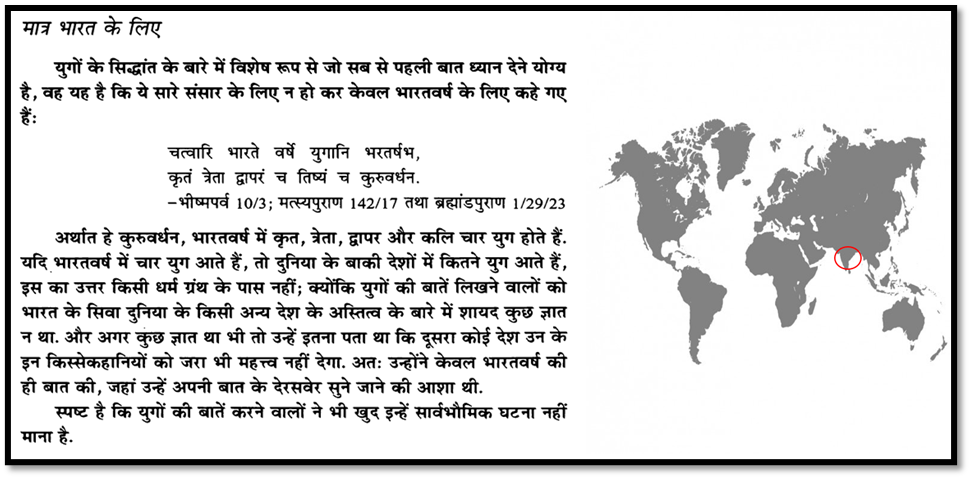
Considering all of this information, let’s now explore whether the concept of Yugas is a genuine historical account or if it could be considered a fabrication in Indian history.
To begin with, let’s examine Satya Yuga in Part 1:
When it comes to confirming the existence of Satya Yuga, there is a lack of historical sources that typically provide evidence for historical periods. These sources would include physical items like coins, artifacts, monuments, records in foreign or secular literary sources, documents, archaeological sites, stone inscriptions, paintings, images, and oral history. Interestingly, there is no such tangible evidence for Satya Yuga outside of Brahmanical literary sources such as the Puranas and the Itihasas. Therefore, the primary information about Satya Yuga is derived from these Brahmanical literary sources, which were not accessible to the common people until the 18th century AD.
The description of Satya Yuga from The Mahabharata, specifically from the Vana Parva, Part II, Section CXLVIII (148), is as follows:
“In the Krita age, there were neither gods, nor demons, nor Gandharvas, nor Yakshas, nor Rakshasas, nor Nagas. And there was no buying and selling. And the Sama, the Rich, and the Yajus did not exist. And there was no manual labor. And then the necessaries of life were obtained only by being thought of. And the only merit was in renouncing the world. And during that yuga, there was neither disease, nor decay of the senses. And there was neither malice, nor pride, nor hypocrisy, nor discord, nor ill-will, nor cunning, nor fear, nor misery, nor envy, nor covetousness. And for this, that prime refuge of Yogis, even the Supreme Brahma, was attainable to all. And Narayana wearing a white hue was the soul of all creatures. And in the Krita Yuga, the distinctive characteristics of Brahmanas, Kshatriyas, Vaisyas, and Sudras were natural, and these ever stuck to their respective duties.”
In the Krita Yuga, Brahma was the sole refuge, and the behavior and customs of the people naturally aligned with the pursuit of Brahma. The only object of their knowledge was Brahma, and all their actions were directed toward Brahma. All orders of society attained merit through one uniform Soul as the object of their meditation, using a single mantra (the Om), and adhering to one ordinance. Despite their different characteristics, they followed a single Veda and shared one religion. They led the four modes of life according to the divisions of time, without seeking any personal gain, and thus achieved emancipation. This is the Krita Yuga, characterized by the religion consisting of the identification of self with Brahma and the virtue of the four orders being whole and complete.
In light of this description, it is essential to acknowledge that the concept of Yugas, including Satya Yuga, is primarily based on Brahmanical literary sources and does not have the kind of tangible historical evidence that is typically used to validate historical periods. The Yuga concept is deeply rooted in mythology and cosmology, representing a cyclical view of time and the moral and spiritual evolution of humanity within the context of Indian traditions. Therefore, whether one considers it a historical account or a symbolic representation of human existence and morality is a matter of perspective and belief.
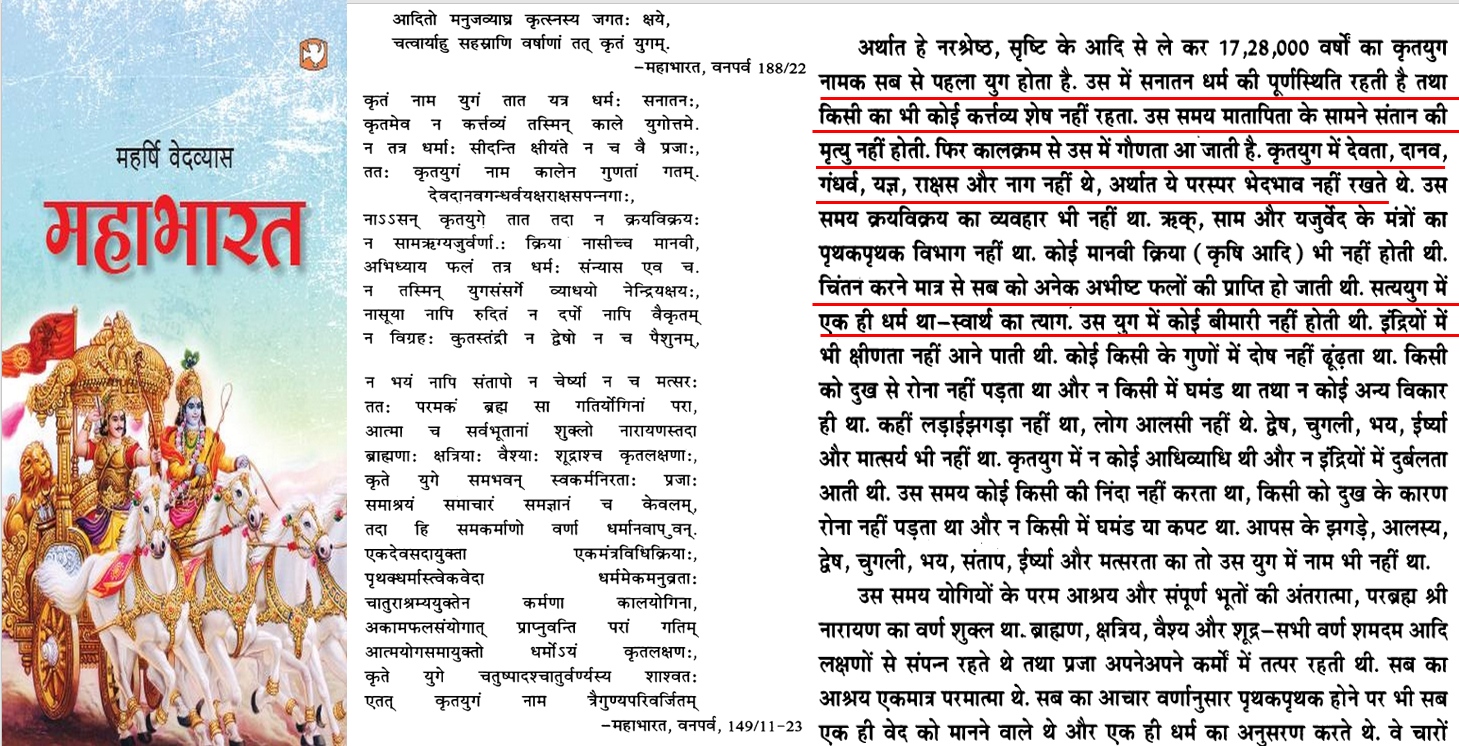
The description of Satya Yuga from The Brahmavaivarta Puranam: Krishna Janma Khanda Chapter XC (90) is as follows:
In the Satya age, Dharma is perfect, men are perfect; truth and mercy are perfect also. At that time all the Vedas and their auxiliary branches, various kinds of histories and literature, the lovely Puranas, the Pancha-ratras (works by Narada etc.,) and the beneficial and delightful systems of religion are discussed freely. In that age all Brahmins are conversant with the Vedas, and virtues and wholly devoted to religions meditations. They are constantly engaged in the contemplation of Narayana and the recitation of his Mantras. At that time all the four castes, Brahmins, Kshatriyas etc., are Vaishnavas and the Sudras devoted to truthful religious rites are engaged in the service of Brahmins.
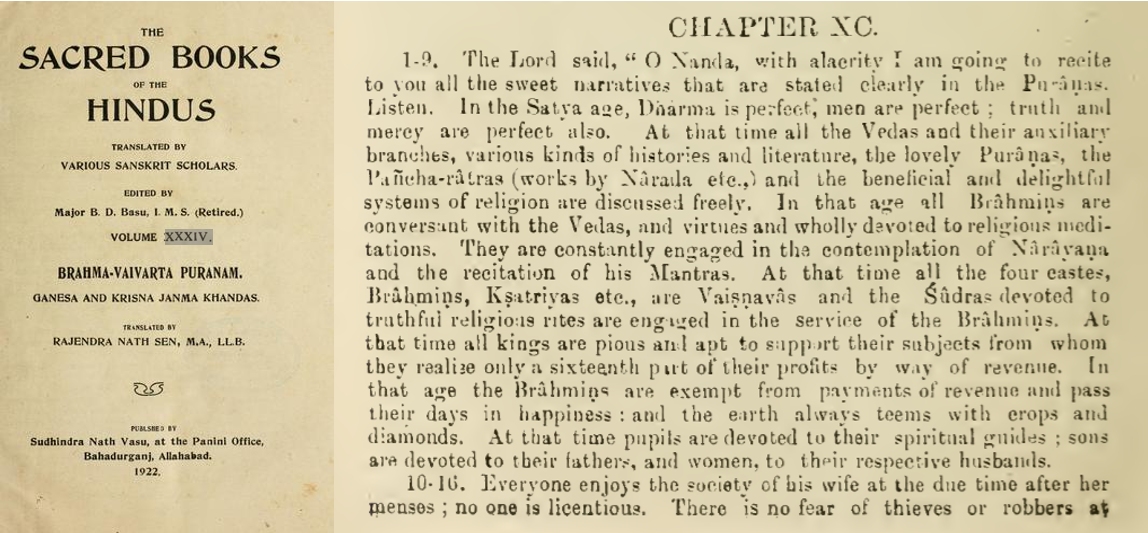
As per Sri Garuda Mahapuranam 215/5-6, the life span of human beings in Satya Yuga is 4000 Years and as per Devi Bhagwat Mahapuranam 6/11/2,4 People of all Varna Worships Parambh.
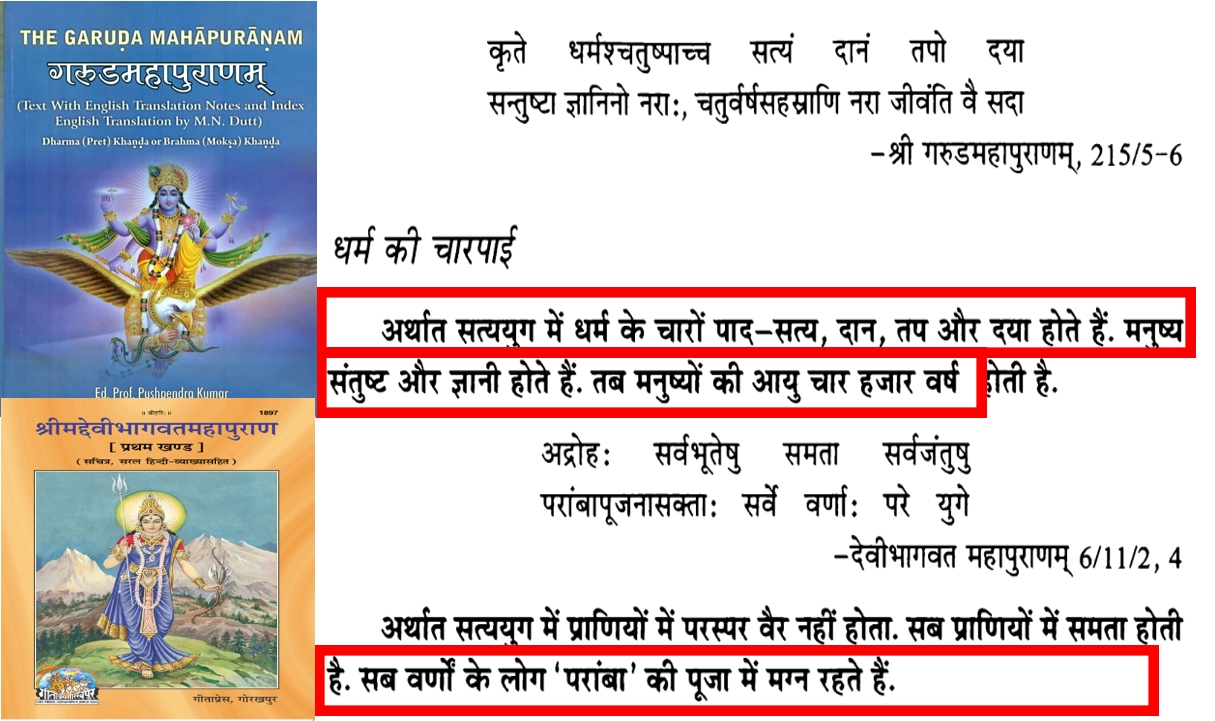
Based on the descriptions found in The Mahabharata, The Brahmavaivarta Puranam, Sri Garuda Mahapuranam, and Devi Bhagwat Mahapuranam, the following key insights about Satya Yuga can be highlighted:
- In Satya Yuga, there were neither gods, demons, Gandharvas, Yakshas, Rakshasas, nor Nagas present.
- All inhabitants of Satya Yuga adhered to a single Veda and followed one religion.
- During this era, discussions and teachings on all Vedas, lovely Puranas, and the Pancha-ratras were held freely.
- Brahmins in Satya Yuga were well-versed in the Vedas.
- All four castes, including Brahmins and Kshatriyas, were Vaishnavas (devotees of Lord Vishnu).
- Human beings in Satya Yuga had a lifespan of 4000 years.
- People of all Varnas (castes) worshipped the Supreme Being (Parambh).
- Sudras in this age were engaged in the service of Brahmins.
- Dharma, or righteousness, was upheld firmly and had four pillars.
- There were no droughts or fears of thieves.
- The inhabitants of Satya Yuga did not suffer from diseases, sensory decay, malice, pride, hypocrisy, discord, ill-will, cunning, fear, misery, envy, or covetousness.
With these insights in mind, it’s important to explore whether Vedic mantras and Manusmriti shlokas align with the description of Satya Yuga provided in these texts.
Firstly, let’s examine the absence of demons, Rakshasas, and thieves in Satya Yuga. It’s worth noting that Satya Yuga is characterized by a state of purity and righteousness, where such negative elements are absent. This aligns with the peaceful and virtuous nature of this age.
Regarding the mention of one Veda in Satya Yuga, it is indeed consistent with the idea of a single Veda being followed by the inhabitants during that era. The unity of religious and spiritual practices is a key feature of Satya Yuga.
Additionally, you mentioned the Hayagriva Avatar of Vishnu, which is believed to have occurred during Satya Yuga. This avatar is associated with the preservation of knowledge, including the Vedas, which further reinforces the notion of a single Veda being followed in Satya Yuga.
In summary, based on the descriptions provided in these texts and the alignment of Vedic mantras and Manusmriti shlokas with the characteristics of Satya Yuga, there is a consistent portrayal of a harmonious and virtuous age marked by the absence of negative influences and a single, unified religious practice..

https://vaniquotes.org/wiki/The_four_yuga-avataras_are…
Now from The Mahabharata we know that Narayana, having assumed the form equipt with the horsehead, slew the two Demons Madhu and Kaitabha.
The Mahabharata Book 12: Santi Parva Section CCCXLVIII (348) Thereupon an encounter took place between those two on one side and Narayana on the other. The Asuras Madhu and Kaitabha were embodiments of the attributes of Rajas and Tamas. Narayana slew them both for gratifying Brahma. He thence came to be called by the name of Madhusudana (slayer of Madhu). Having compassed the destruction of the two Asuras and restored the Vedas to Brahma, the Supreme Being dispelled the grief of Brahma. Aided then by Hari and assisted by the Vedas, Brahma created all the worlds with their mobile and immobile creatures. After this, Hari, granting unto the Grandsire intelligence of the foremost order relating to the Creation, disappeared there and then for going to the place he had come from. It was thus that Narayana, having assumed the form equipt with the horsehead, slew the two Danavas Madhu and Kaitabha (and disappeared from the sight of Brahma). Once more, however, he assumed the same form for the sake of causing the religion of Pravritti to flow in the universe.’
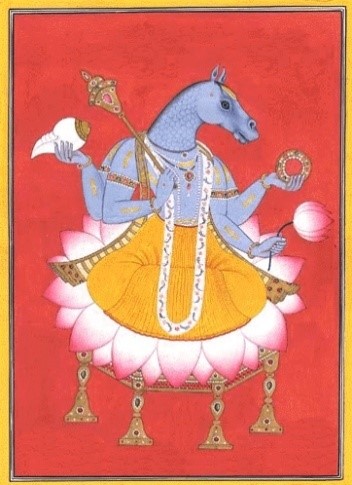
Here Vishnu took Hayagriva Avatar in Satya Yuga Vishnu slew and restored the Vedas to Brahma.
Rig Veda 1.36.15 (English translation): Youthful and most resplendent Agni, protect us against evil spirits, and from the malevolent (man), who gives no gifts; protect us from noxious (animals), and from those who seek to kill us.”
Rig Veda 1.42.3 (English translation): Drive him far away, apart fom the road, the hinderer of our journey, a thief, a deceiver.”
Rig Veda 1.189.5 (English translation): Abandon us not, Agni, to a wicked, voracious, malevolent foe; (abandon us) not to one who has fangs, and who bites; nor to one without teeth; nor to the malignant; nor give us up, powerful Agni, to disgrace.”
Commentary by Sāyaṇa: Ṛgveda-bhāṣya
To one who has fangs and who bites: snakes and venomous reptiles; to one without teeth: and who, therefore, do mischief with other natural weapons, as horns and claws; nor to the malignant: rīṣate = to one who injures as thieves and rākṣasas
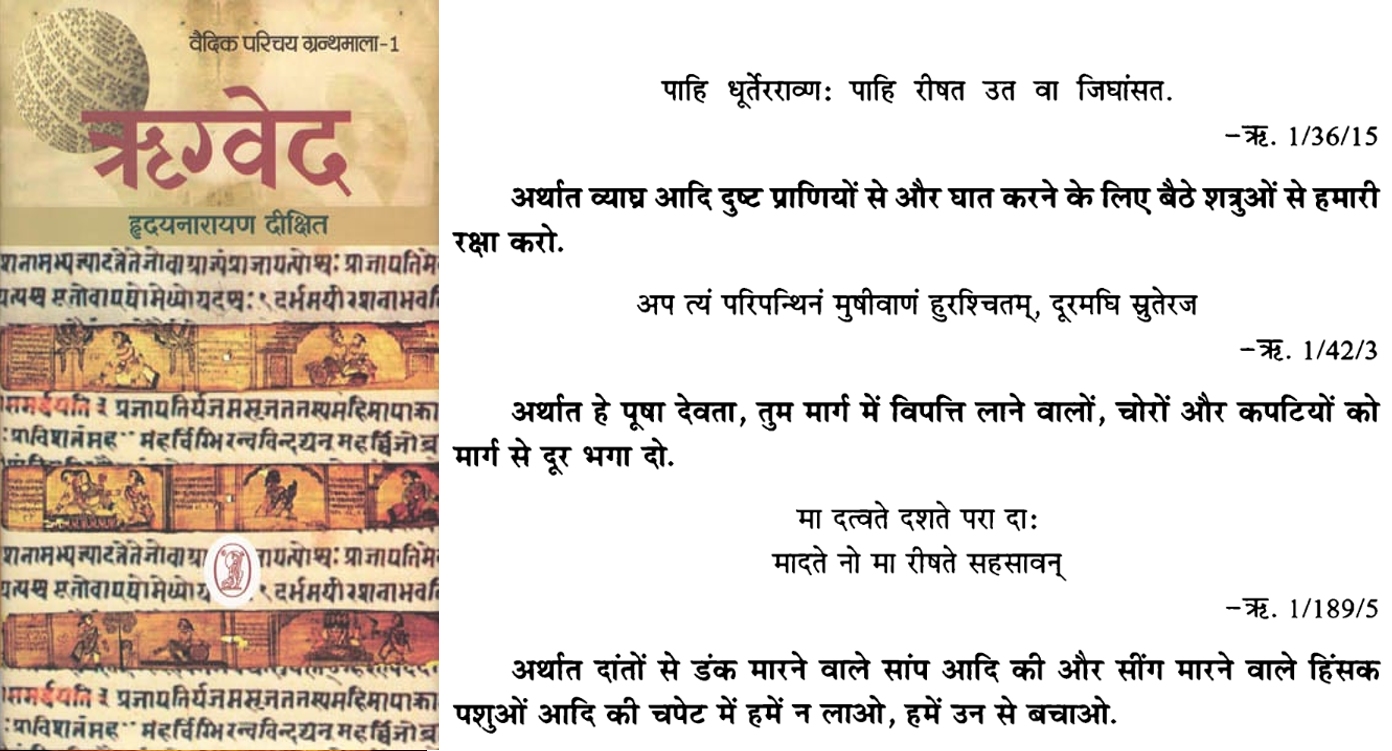
Manusmriti Verse 8.314 also talks about thieves – The wise thief shall approach the king, with flying hair, confessing the theft, with the words—‘I have done this, punish me’;—(314)
This means either the description of Satya Yuga Given in The Mahabharata Vana Parva, Part II Section CXLVIII (148) saying no demons only one Veda (Singular Form) is there at that time is wrong or mentioning there are demons and Vedas (Plural Form) in The Mahabharata Book 12: Santi Parva Section CCCXLVIII (348) is wrong or there is no Satya Yuga at all and as per Rig Veda 1.36.15, 1.42.3 and 1.189.5, Evil spirits, the malevolent (man), those who seek to kill others, a thief, a deceiver and rākṣasas are there which means If we believe the Vedas then as per Veda Mantras there is no Satya Yuga. If we believe the description of Satya Yuga written in The Mahabharata, The Brahmavaivarta Puranam, Sri Garuda Mahapuranam and Devi Bhagwat Mahapuranam then the Veda Mantras are wrong.
Secondly, let us examine the claim that all of them followed one religion and were Vaishnavas and people of all Varnas worshipped Parambh in Satya Yuga:
Rig Veda 3.53.14 (English translation): What do the cattle for you among the Kīkaṭas; they yield no milk to mix with the Soma, they need not the vessel (for the libation); bring them to us; (bring also) the wealth of the son of the usurer, and give us Maghavan, (the possessions) of the low branches (of the community).
Commentary by Sāyaṇa: Ṛgveda-bhāṣya: The Kīkaṭas: (Nirukta 6.32) are people who do not perform worship, who are infidels, nāstikas; in countrie sinhabited by anāryas (kīkaṭā nāma deśonāryanivāsaḥ); na tapanti gharmāṇi: harmyam = a house; Gharmāṇi = a vessel termed mahāvīra used at the rite called pragṛhya: pragṛh yākhyā karmopa yuktam mahāvīrapātram, which the cattle do not warm by yielding their milk to it; Usurer: ā bhara pramagandasya vedas: maganda = kusidin, or usurer, one who says to himself, the money that goes from me will come back doubled, and pra = a patronymic; low branches of the community: naicāśākham, that which belongs to a low (nīca) branch, or class (śākha); the posterity born of Śūdras and the like
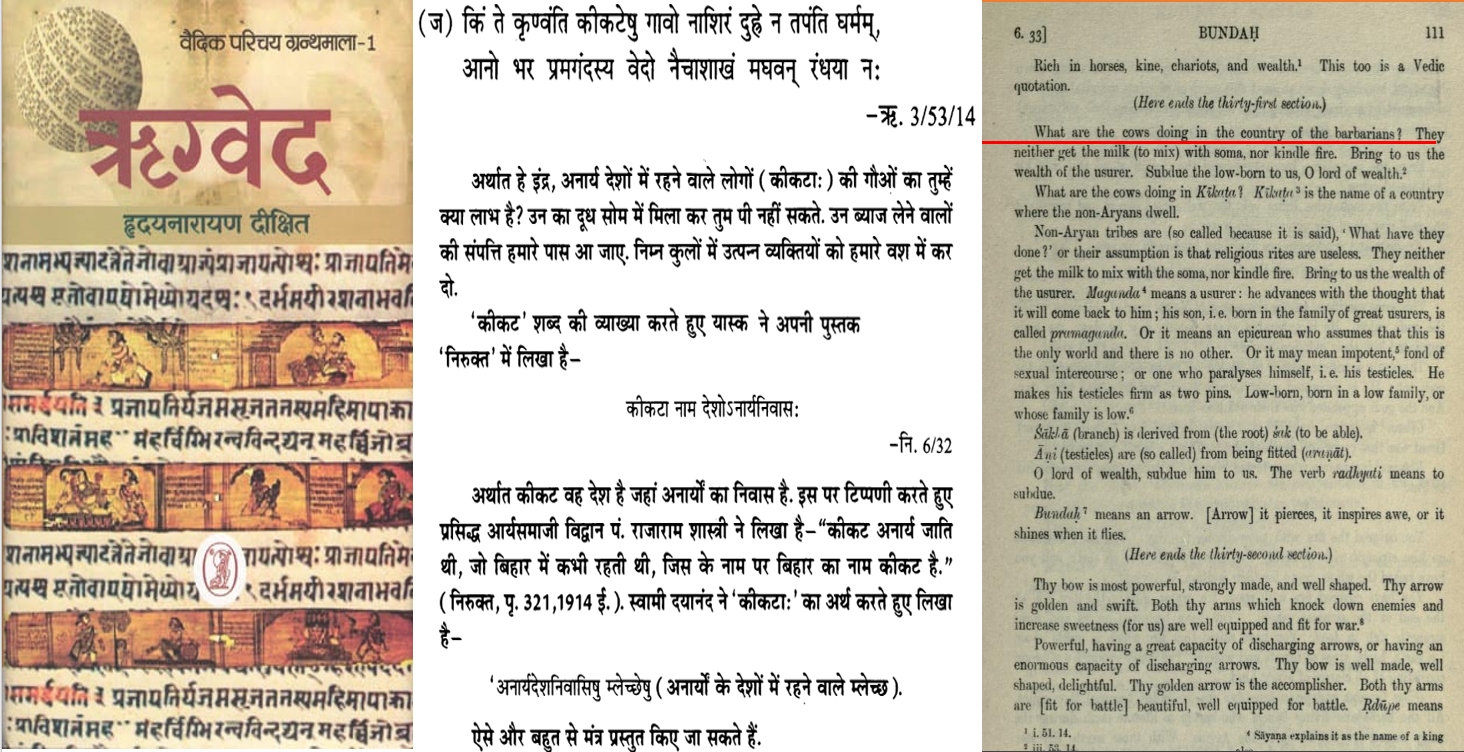
Rig Veda 7.21.5 (English translation): “Let not th rākṣasas, Indra, do us harm; let not the evil spirits do harm to our progeny, most powerful (Indra); let the sovereign lord, (Indra), exert himself (in the restraint) of disorderly beings, so that the unchastemay not disturb our rite.”
Commentary by Sāyaṇa: Ṛgveda-bhāṣya: Let not the rākṣasas: na vandana vedyabhiḥ = vandanāni, rākṣāṃsi, prajabhyaḥ;the unchaste: śiṣnadevaḥ, abrahmacharya ityarthaḥ (Yaska 4.19); or, maybe those who hold the liṅga for a deity
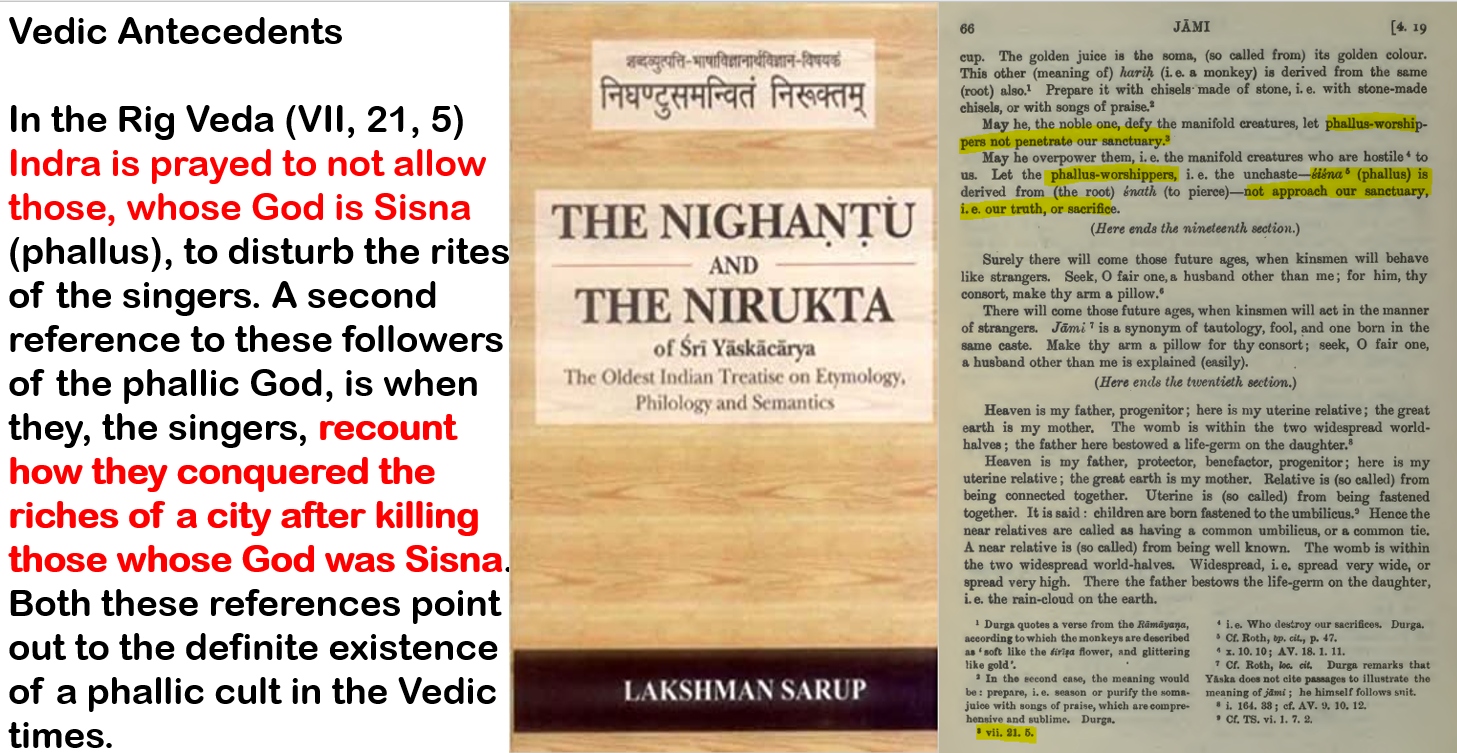
As per Rig Veda 3.53.14 and Rig Veda 7.21.5, there are people who do not perform worship, who are infidels, nāstikas; and People worship Linga in countries inhabited by anāryas. If we believe the Vedas then as per Veda Mantras there is no one worship and one people in Satya Yuga which means, there is no Satya Yuga. If we believe the description of Satya Yuga written in The Mahabharata, The Brahmavaivarta Puranam, Sri Garuda Mahapuranam and Devi Bhagwat Mahapuranam then the Veda Mantras are wrong.
Thirdly, let us check the claim that the life span of human beings, which is 4000 Years in Satya Yuga:
Now let us see Some more Veda Mantras Rig Veda 1.89.9 (English translation): Since a hundred years were appointed (for the life of man), interpose not, gods, in the midst of our passing existence, by inflicting infirmity in our bodies so that our sons become our sires (i.e., let us not become so feeble and firm as to be, infants and to require the paternal care of our own sons].”
Rig Veda 6.47.30 (English translation): “Sound loud against the (hostile) host; animate our prowess; thunder aloud, terrifying the evil-minded; rapid, drum, those whose delight is to harm us; you are the fist of Indra; inspire us with fierceness.”
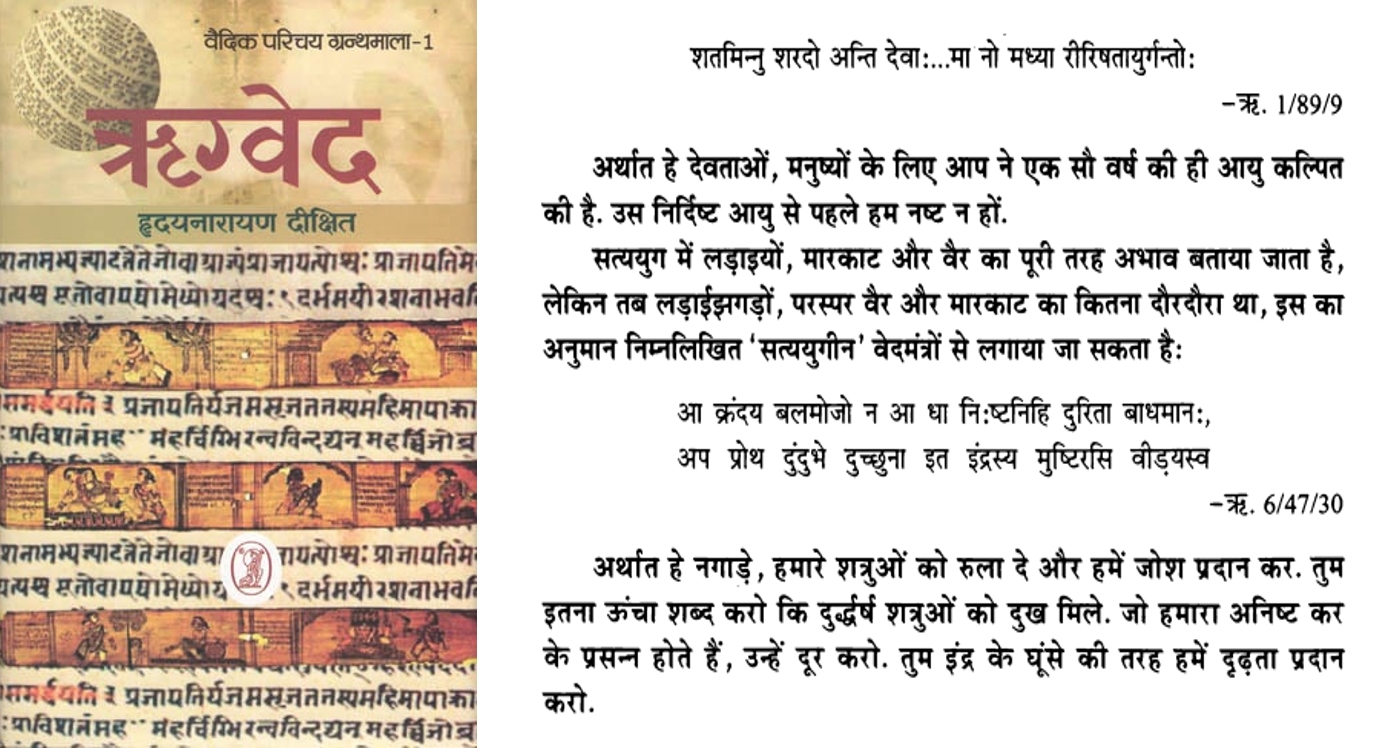
As per Rig Veda 1.89.9 and Rig Veda 6.47.30, the life span is decided as 100 Years and there are evil minded people. But we see the life span of Satya Yuga people as 4000 Years and evil-minded people are there which means If we believe the Vedas then as per Veda Mantras there is no Satya Yuga. If we believe the description of Satya Yuga written in The Mahabharata, The Brahmavaivarta Puranam, Sri Garuda Mahapuranam and Devi Bhagwat Mahapuranam then the Veda Mantras are wrong.
Fourthly, let us check the claim of that there was neither disease, nor decay of the senses In Satya Yuga:
Rig Veda 1.122.9 (English translation): “The mman who does you wrong, Mitra and Varuṇa, who injures you in any way, who does not present you with oblations, contracts for himself sickness in his heart; but he who, performing worship, (celebrates it) with praises.”
Commentary by Sāyaṇa: Ṛgveda-bhāṣya: Akṣṇayā dhruk: cakreṇa, mārgeṇa druhyati, offends by a wheel, or a way; this is the equivalent of anyathā prakareṇa, in another manner; yakṣmam hṛdaye nidhatte:he plural ces or deposits consumption in the heart; but yakṣma = vyādhi, sickness in genitive ral; a reference, perhaps, to the sense of mortification experienced by those who neglect the gods on observing the blessings which recompense devotion.
Rig Veda 4.1.5 (English translation): “Do you Agni our preserver bemost nigh to us with your protection at the breaking of this dawn; deprecate Varuṇa for us and propitiated (by our praise) feed upon the grateful (oblation) and be to us of auspicious invocation.”
Commentary by Sāyaṇa: Ṛgveda-bhāṣya: Yajus. 21.4; Deprecate Varuṇa for us: ava yakṣva no varuṇam: vināśaya, destroy (verb); varuṇa-kṛtam (object), that which has been done by Varuṇa, as disease inflicted by him, such as dropsy; or the term may imply pāpam, sin
Rig Veda 4.4.13 (English translation): “Those your protecting (rays), Agni, which, beholding (what had chanced), preserved the blind son of Mamatā from misfortune; he, knowing all things, cherished those benevolent (rays), and his enemies, intending to destroy him, wrought him no harm.”
Commentary by Sāyaṇa: Ṛgveda-bhāṣya: Preserved the blind son: an allusion to the legend of the birth of Dīrghatamas, who recovered his sight by worshipping Agni; cherished those benevolent rays: rakṣa tān sukṛto viśvavedā: viśvavedas may apply to Agni or to Dīrghatamas; by adding, bhavān, your honour, the term seems to apply to Agni.
Rig Veda 2.33.2 (English translation): “Nourished by the curative vegetables which are bestowed by you, may I live a hundred winters; extirpate mine enemies, my exceeding sin, and my manifold infirmities.”
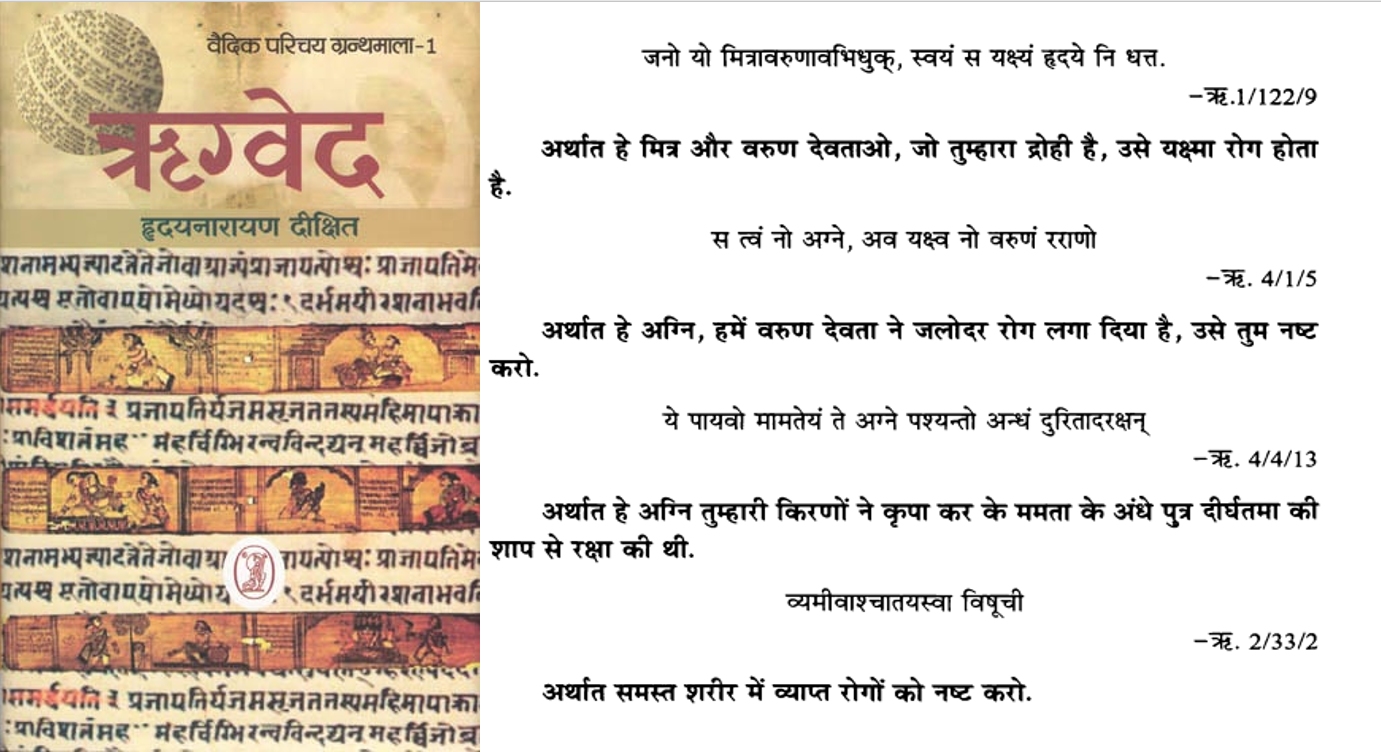
As per Rig Veda 1.122.9, Rig Veda 4.1.5, Rig Veda 4.4.13 and Rig Veda 2.33.2 there is Sickness, Disease, Curse and Sin which means If we believe the Vedas then as per Veda Mantras there is no Satya Yuga. If we believe the description of Satya Yuga written in The Mahabharata, The Brahmavaivarta Puranam, Sri Garuda Mahapuranam and Devi Bhagwat Mahapuranam then the Veda Mantras are wrong.
Fifthly, let’s examine another aspect of the Satya Yuga claim. It is said that during Satya Yuga, there was an absence of malice, pride, hypocrisy, discord, ill-will, scarcity or drought, and there were no Rakshasas present.:
Rig Veda 1.189.5 (English translation): “Abandon us not, Agni, to a wicked, voracious, malevolent foe; (abandon us) not to one who has fangs, and who bites; nor to one without teeth; nor to the malignant; nor give us up, powerful Agni, to disgrace.”
Commentary by Sāyaṇa: Ṛgveda-bhāṣya: To one who has fangs and who bites: snakes and venomous reptiles; to one without teeth: and who, therefore, do mischief with other natural weapons, as horns and claws; nor to the malignant: rīṣate = to one who injures as thieves and rākṣasas
Rig Veda 7.1.19 (English translation): “Relinquish us not, Agni, to the want of male offspring; nor to deficient clothing; nor to such destruction; leave us not to hunger, not to the rākṣasas; expose us not, observer of truth, to evil, whether in the house or in the forest.”
Rig Veda 1.164.32 (English translation): “He who has made (this state of things) does not comprehend it; he who has beheld it, has it also verily hidden (from him); he, whilst yet enveloped in his mother’s womb, is subject to many births, and has entered upon evil.”
Commentary by Sāyaṇa: Ṛgveda-bhāṣya: He who has: Man; Nirukta, considers wind as the cause of rain and alludes to it allegorically.
Rig Veda 4.18.13 (English translation): “In extreme destitution I have cooked the entrails of a dog; I have not found a comforter among the gods; I have beheld my wife disrespected; then the falcon, (Indra), has brought to me sweet water.”
Commentary by Sāyaṇa: Ṛgveda-bhāṣya: In extreme destitution: So Manu has, Vāmadeva, who well knew right and wrong, was by no means rendered impure, though desirous when oppressed with hunger, of eating the flesh of dogs for the preservation of his life; icchan attum, wishing to eat; the text has śuno āntrāṇi pece, I cooked the entrails of a dog; the falcon: i.e., as swift as a hawk, śyena vat śīghragāmīndraḥ; Sūkta 18: Ṛṣi vāmadeva, while yet in the womb, was reluctant to be born and chose to come into the world through his mother’s side; aware of his purpose, the mother prayed to Aditi, who thereupon came, with her son Indra, to expostulate with the Ṛṣi; this is the subject of the Sūkta
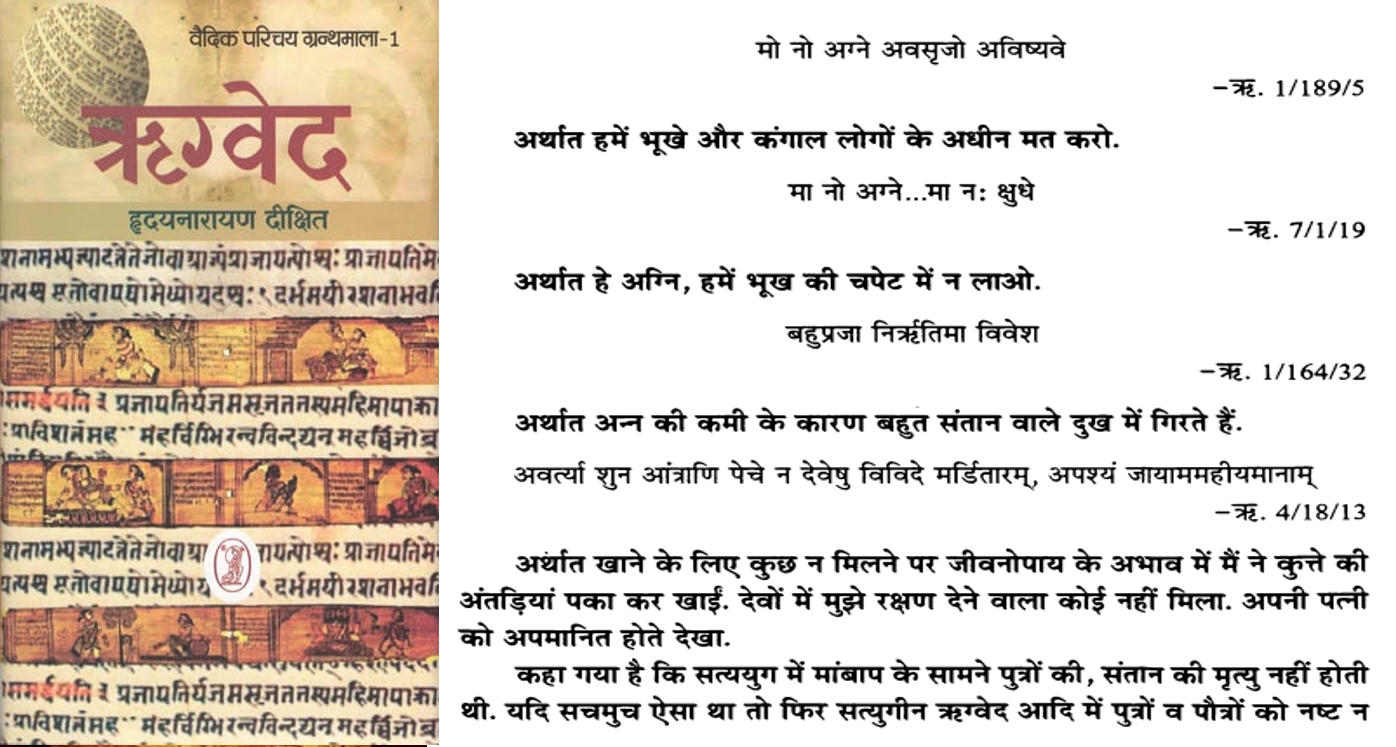
As per Rig Veda 1.189.5, Rig Veda 7.1.19, Rig Veda 1.64.32, Rig Veda 4.18.13 there are wicked, voracious, malevolent foe, thieves and rākṣasas, in extreme destitution cooked the entrails of a dog and ate which means If we believe the Vedas then as per Veda Mantras there is no Satya Yuga. If we believe the description of Satya Yuga written in The Mahabharata, The Brahmavaivarta Puranam, Sri Garuda Mahapuranam and Devi Bhagwat Mahapuranam then the Veda Mantras are wrong.
Lastly let us examine the claim of No envy / people leaving in accord in Satya Yuga
Let us see at Atharva Veda 12.5.62. in which it is writes as follows.
Rend, rend to bits, rend through and through, scorch and consume and burn to dust, the one who rejects the Vedas.
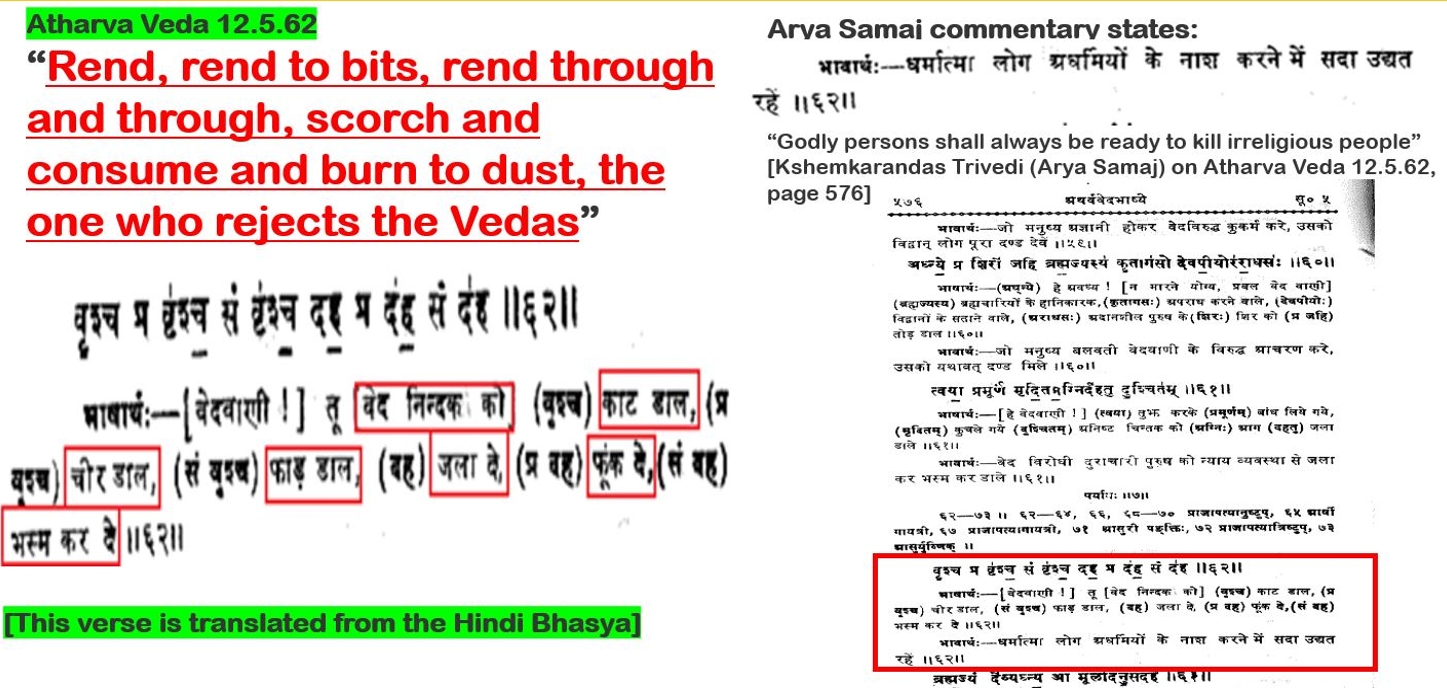
As per Atharva Veda 12.5.62 the one who rejects the Vedas is rend to bits, and through, scorch and consume and burn to dust. This means there is no single religion, and all people are not following Vedas which means If we believe the Vedas then as per Veda Mantras there is no Satya Yuga. If we believe the description of Satya Yuga written in The Mahabharata, The Brahmavaivarta Puranam, Sri Garuda Mahapuranam and Devi Bhagwat Mahapuranam then the Veda Mantras are wrong.
After Examining the Mantras from Vedas and Manusmriti we cany say, the description available from The Mahabharata, The Brahmavaivarta Puranam, Sri Garuda Mahapuranam and Devi Bhagwat Mahapuranam, below regarding Satya Yuga are false claims.
- There were neither gods, nor demons, nor Gandharvas, nor Yakshas, nor Rakshasas, nor Nagas.
- All of them followed a single Veda; and they had one religion.
- At that time all the Vedas, the lovely Puranas, and the Pancha-ratras are discussed freely.
- All Brahmins are conversant with the Vedas.
- All the four castes, Brahmins, Kshatriyas etc., are Vaishnavas.
- The life span of human beings is 4000 Years.
- People of all Varna Worships Parambh.
- The Sudras are engaged in the service of Brahmins.
- Dharma is On Four Legs
- No Drought, No fear of thieves.
- Neither disease, nor decay of the senses. And there was neither malice, nor pride, nor hypocrisy, nor discord, nor ill-will, nor cunning, nor fear, nor misery, nor envy, nor covetousness.
Even when we read Manusmriti we can understand Satya Yuga is Hoax or Manusmriti / First Human Law Code is not for Satya Yuga
In Manusmriti Verse 8.4-7 we see the list of The Eighteen Heads of Dispute enumerated – Of these the first is (1) Non-payment of Debt; (then) (2) Deposits, (3) Selling without ownership, (4) Joint concerns, (5) Non-delivery of what has been given away,—[4]—(6) Non-payment of wages, (7) Breach of Contract, (8) Recision of Sale and Purchase, (9) Dispute between the Owner and the Keeper,—[5]—(10) Disputes regarding Boundaries, (11) and (12) Assault, physical and verbal, (13) Theft, (14) Violence, (15) Adultery,—[6]—(16) Duties of man and wife, (17) Partition, and (18) Gambling and Betting;—these are the eighteen topics that form the basis of law-suits.—(4-7)
In Manusmriti Verse 11.126 – 131 and Verse 8.267 – 268 we see injustice in giving punishment to individuals of different varna for the same crime which means dharma is not yet all on four legs –
In Manusmriti 10.43 – 45: We see races which came into existence in Kali Yuga
10.43. But in consequence of the omission of the sacred rites, and of their not consulting Brahmanas, the following tribes of Kshatriyas have gradually sunk in this world to the condition of Sudras.
10.44. (Viz.) the Paundrakas, the Chodas, the Dravidas, the Kambogas, the Yavanas, the Sakas, the Paradas, the Pahlavas, the Chinas, the Kiratas, and the Daradas.
10.45. All those tribes in this world, which are excluded from (the community of) those born from the mouth, the arms, the thighs, and the feet (of Brahman), are called Dasyus, whether they speak the language of the Mlecchas (barbarians) or that of the Aryans.
From all these evidences presented above, we have to conclude that ither Satya Yuga is Hoax or the Brahmanical Puranic, Smriti and Itihasas Literature are wrong.
Next in Part 2, let us examine about the Treta Yuga……

